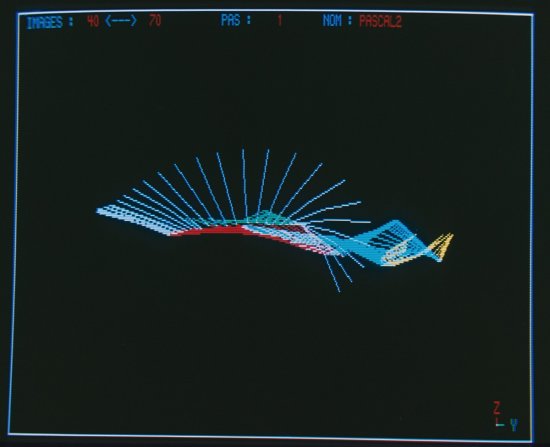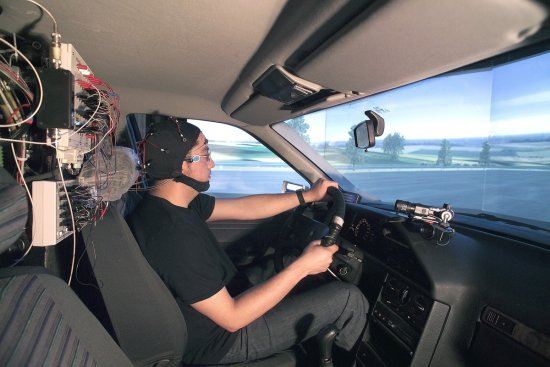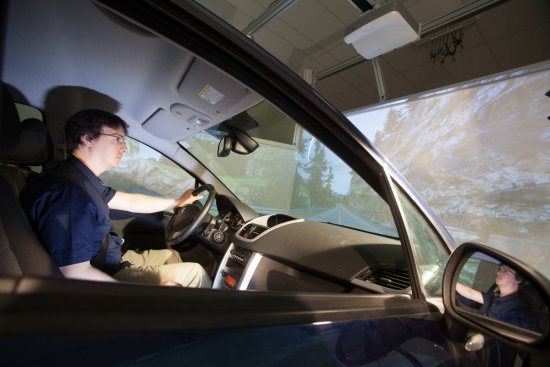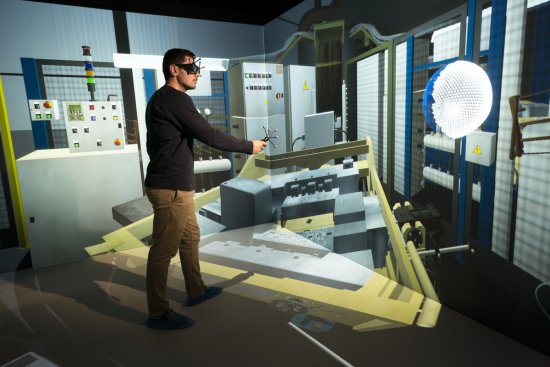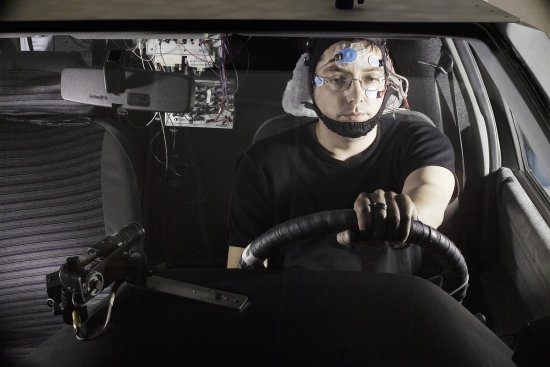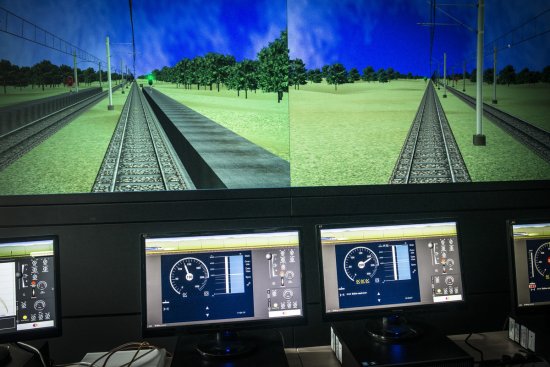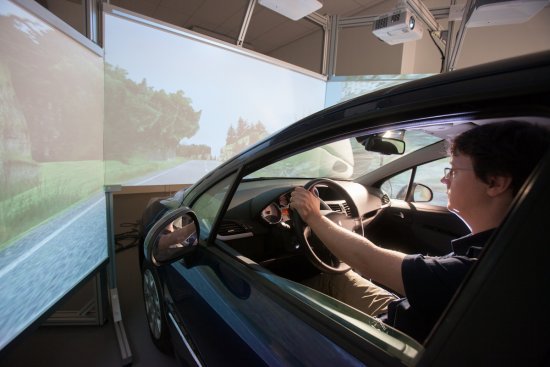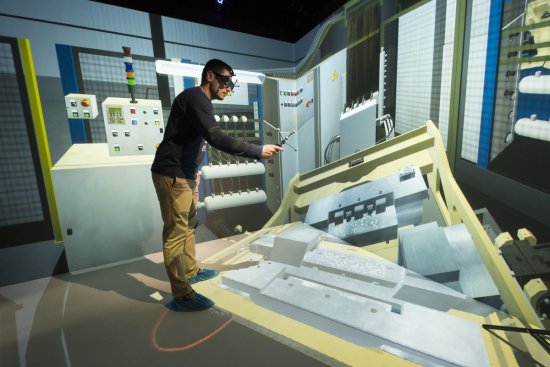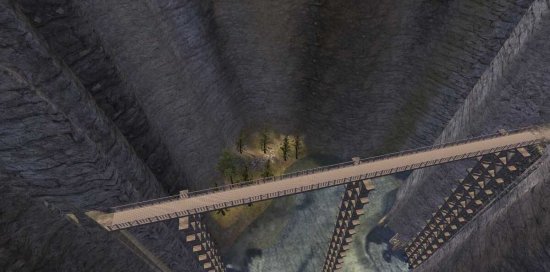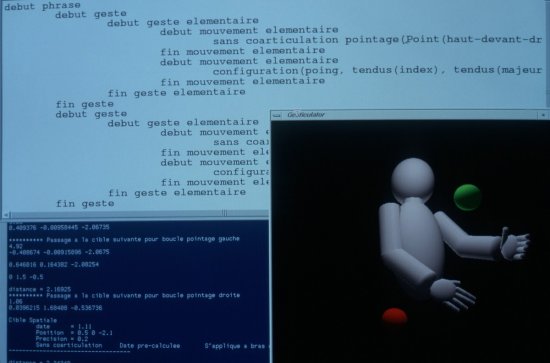Only available for non-commercial distribution
© CNRS - 2021
Reference
7328
Feeling virtual reality at last
"Imagine stepping into a virtual world, walking through an orchard. You want to pick an apple, and when you grab it, you can feel it in your hand, as if it were real. Transforming the world of virtual reality into a truly tactile experience is the aim of the research project carried out by the IRISA laboratory in the northwestern French town of Rennes. Claudio Pacchierotti and his colleagues are specialists in haptic technology, the science that studies touch. Their research is based on two approaches: using haptic devices to trick our sense of touch, and trying to recreate these sensations through contactless haptic feedback, by using ultrasound.
Duration
Production year
Définition
Color
Sound
Version(s)
Original material
The use of media visible on the CNRS Images Platform can be granted on request. Any reproduction or representation is forbidden without prior authorization from CNRS Images (except for resources under Creative Commons license).
No modification of an image may be made without the prior consent of CNRS Images.
No use of an image for advertising purposes or distribution to a third party may be made without the prior agreement of CNRS Images.
For more information, please consult our general conditions
Transcription
01:00:06:22
Imagine stepping into a virtual world, where you find yourself walking through a garden. You find an apple tree... pick an apple... and as soon as you grasp it, you can feel it in your hand, as if it were real. You can even throw it into the basket.
01:00:29:21
Here at the IRISA laboratory in Rennes, scientists are working on a research project that aims to transform the world of virtual reality into a truly tactile experience. Claudio Pacchierotti and his colleagues are specialists in haptic technology. Haptics is the science of touch.
Claudio PACCHIEROTTI, Researcher in Haptic Science
01:00:47:16
In research, when we talk about haptic science and haptic technology, we refer to the study and understanding of how to convey and transfer information through the sense of touch.
01:01:00:14
It's a sense that has long been neglected by medical research. And yet, our sense of touch is extremely important. It allows us to move around, to pick up objects, and avoid hurting ourselves.
01:01:14:15
In fact, it's essential. A baby can only develop properly through physical contact with another human being.
01:01:24:09
Touch is also a sense that is relatively new to the realm of virtual reality, which prioritises vision and hearing, since they are easier senses to replicate. But our sense of touch can also help to create a more immersive experience.
Maud MARCHAL, Professor of Haptics
01:01:42:03
Virtual reality enables us to create almost any object, and manipulate it. So in order to produce the sensation of touch, as if we were handling it for real, we take objects from the real world and use haptic devices to enhance their attributes, whether that's their geometry, or their physical properties.
01:02:05:02
The team has a range of devices to help them with their haptic experiments. Such as this H-ring, a motorised ring fitted with a strap that tightens or loosens when you press the piston, making it feel easier or harder to press.
Claudio PACCHIEROTTI
01:02:24:06
I will receive two types of haptic, tactile information. The first one is me touching the piston and the second one is that added by the wearable interface. It's like tricking the brain in the sense that the object you touch is always the same, but you perceive it differently because you are provided with additional sensations.
01:02:49:22
This research is part of a Europe-wide programme studying haptic reality, also known as H-reality.
01:02:58:04
The programme aims to make the virtual experience even more realistic, allowing us to feel objects as we touch them.
01:03:04:09
For example, this motorised ball, which is attached to a bracelet. This experiment will help to create a more immersive virtual experience by allowing the wearer to pick up objects. As soon as you grasp something, you can actually feel it materialising in your hand.
01:03:22:09
The sense of touch makes the virtual environment more interactive. For example, you can throw a ball for a dog. Or play a game of knock-em-over. The virtual world and the real world feel like they're one and the same, even if the sensation of touch is not quite the same as it would be in real life.
Guillaume GICQUEL, Haptics Engineer
01:03:43:16
In this case, our virtual object happens to be an apple, so its shape is basically a sphere. When we grasp it, our brain is able to overlook the different texture, and so on, because the image that we're seeing in this virtual world is showing us that we have an apple in our hand. So the brain finds it easier to accept all the little differences that occur compared with holding an apple in the real world.
01:04:09:09
The scientists are also working on another technique, known as contactless haptic feedback. In this case, there's no need to wear a haptic device. The sensation is beamed directly onto the skin, using ultrasound, in a process that's similar to the way we can ‘feel' the bass at a concert.
01:04:28:18
This tablet acts as a kind of ultrasonic speaker, which helps feel the shapes that appear inside the VR helmet. The scientists have even created technologies that allow the user to move around and interact with the virtual environment.
01:04:44:19
To show us what these invisible, inaudible waves look like, the scientists send them through an oil bath. The shape that appears in the oil is identical to that sensed by the hand.
Thomas HOWARD, Researcher in Haptic Science
01:04:56:02
When I use the machine to focus the waves on a part of my skin, I feel a little vibration, located exactly at that point.
01:05:04:12
If I move that focal point around on my skin, it creates the sensation of a geometric shape, pressing against the skin.
01:05:14:14
This basic research into haptics could lead to major breakthroughs in our understanding of the sense of touch. In years to come, it could be of interest to the video game industry. But that's not all. The advertising sector could also use these technologies to allow passers-by to feel a certain texture, or the shape of an object. Haptics could also be used for medical purposes, such as training, or upgrading the design of a wheelchair with vibrating navigation aids.
01:05:49:16
There is no end to the uses and possibilities of haptics. And now this technology is taking its first steps into a brave new virtual world.

